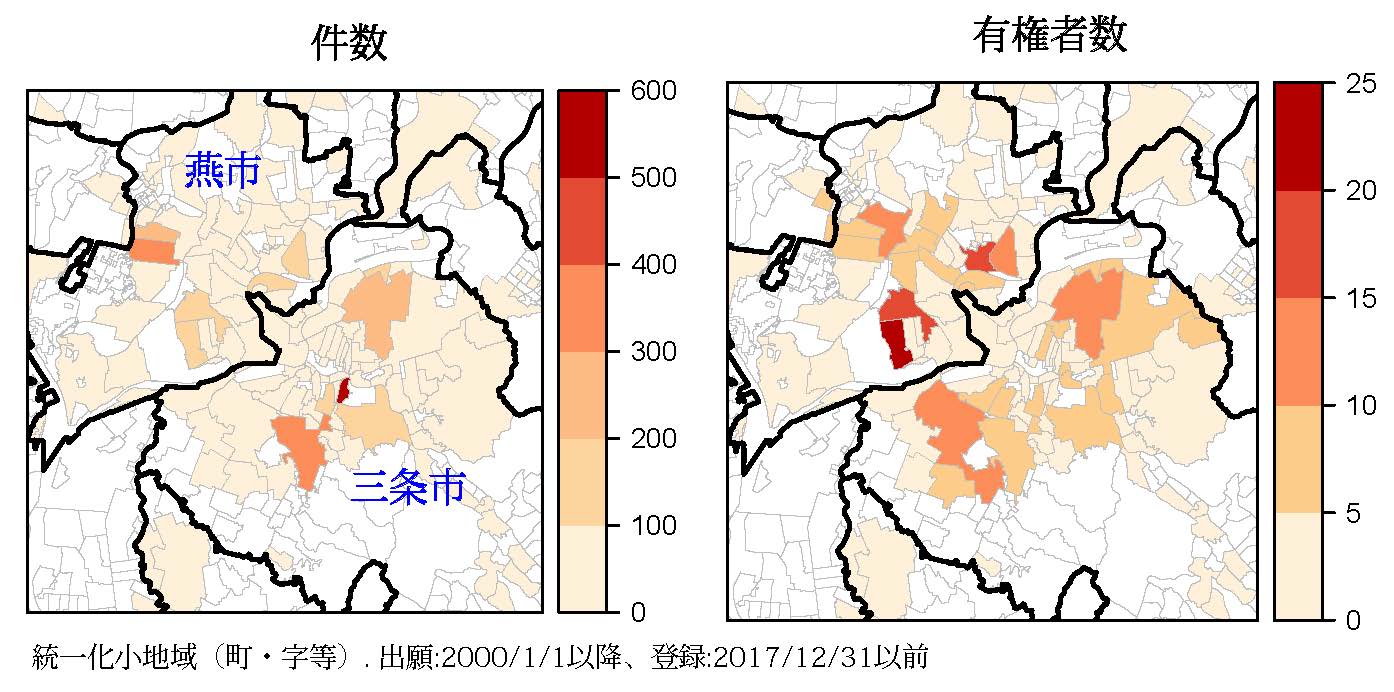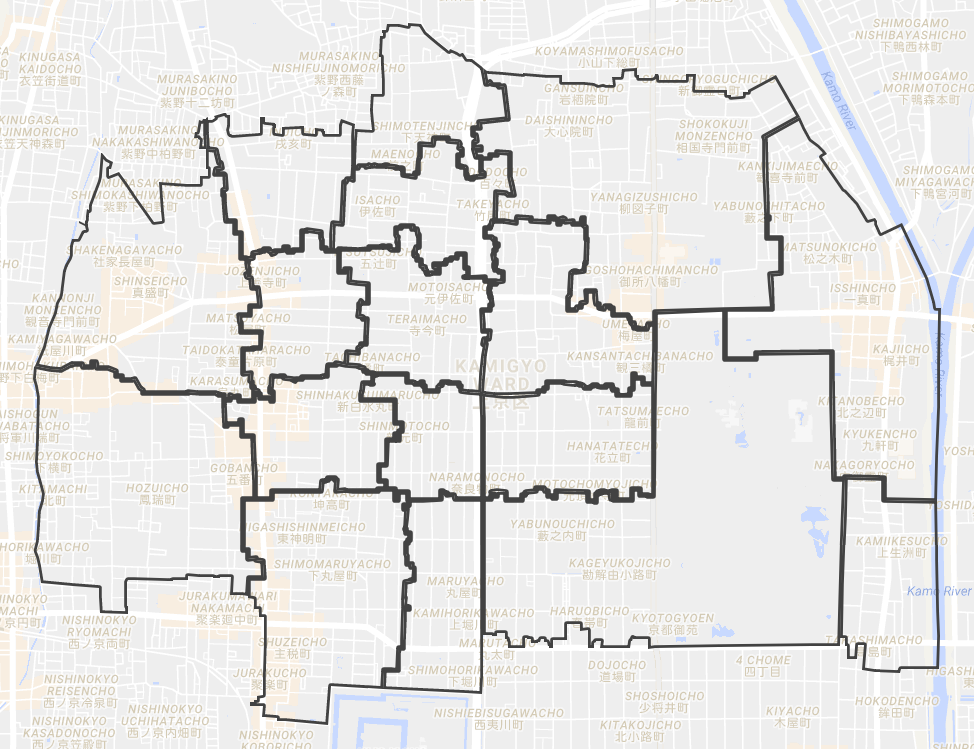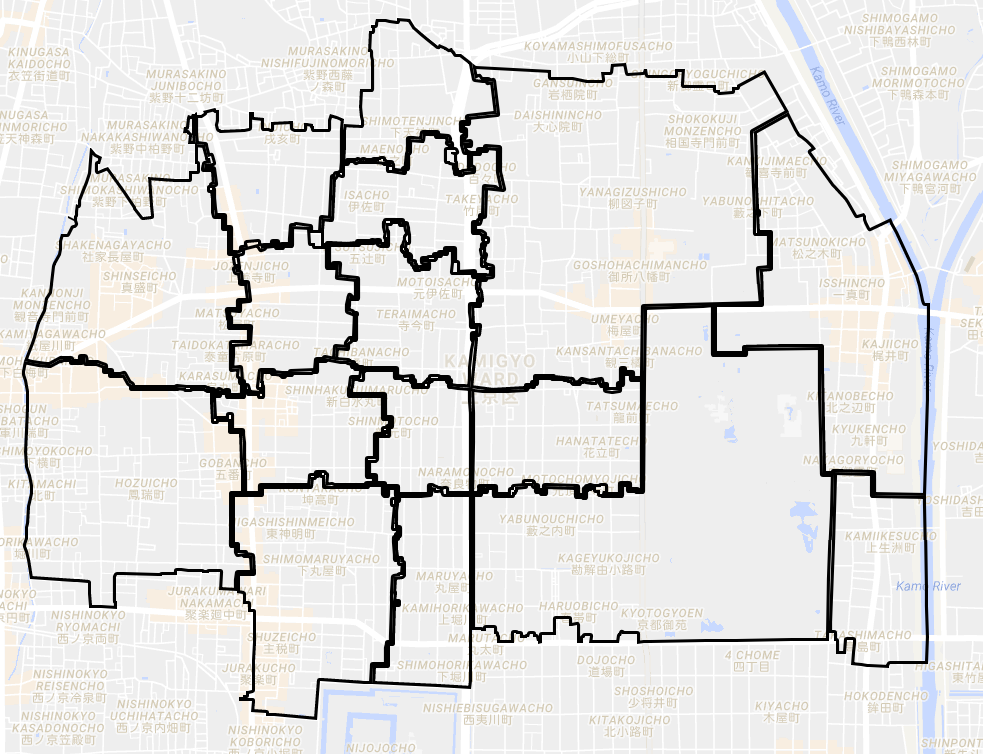
Left: Numbers of designs; Right: Numbers of registrants
(Engel 2018).

Objective: Create a set of community level census tract aggregations that can be used for longitudinal econometric research.
This project will create an aggregate set of census tract that covers Japanese census tracts at the community level for multiple census years. The basic idea is that while Japanese municipalities merged extensively in the early 2000s and continue to merge, community (cho-oaza) have remained largely unchanged. However, there have been many small boundary changes. Also, some exurban developments have produced more extensive changes. This project takes the naive approach of using shapefiles to determine overlaps and merging tracts that overlap more than 1% in either direction. It will cover census years 2000, 2005, 2010, 2015 and possibly 2020. It will also cover economic census years 2009 and 2014.

|
|

|

|

|
1. This project is unofficial and is not affiliated with the Statistics Bureau of Japan. or any other Japanese government agency.